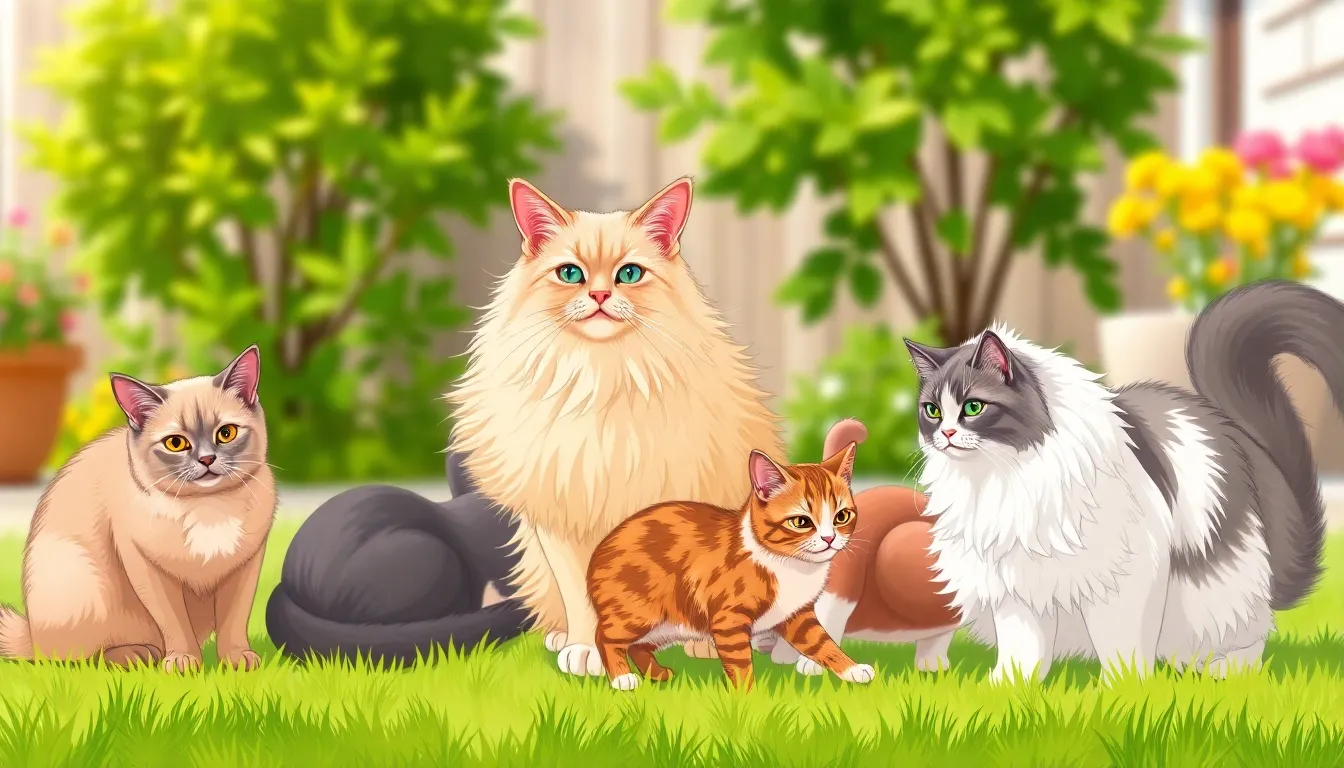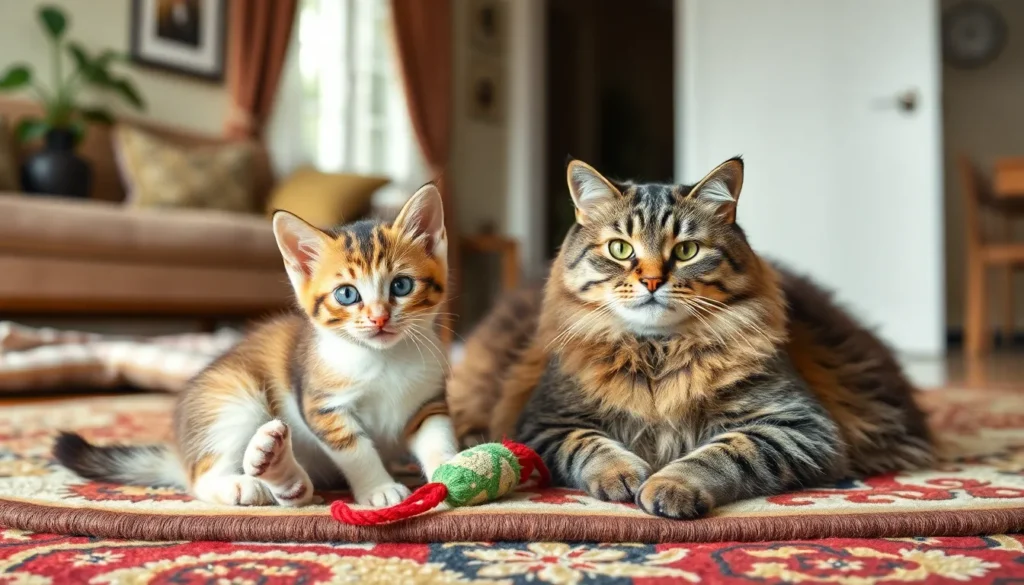Table of Contents
ToggleCats are the ultimate mystery wrapped in fur. One minute they’re tiny furballs, pouncing around like they own the place, and the next, they’ve transformed into elegant creatures lounging like royalty. But when does this magical metamorphosis reach its grand finale? Understanding when cats are officially full-grown can save owners from those awkward moments of thinking their feline friend is still a kitten when they’re actually a fully-fledged adult.
Understanding Cat Growth Stages
Cats go through several growth stages before reaching full maturity. Recognizing these stages helps in understanding their behavior and care needs.
Kitten Stage
The kitten stage lasts from birth to around six months. During this time, rapid growth occurs, with kittens typically doubling their weight in the first week. Socialization is crucial, as interactions shape their personalities. Vaccinations and proper nutrition form the basis for healthy development. Homes with ample playtime encourage physical and mental stimulation, essential for their growth.
Adolescent Stage
The adolescent stage occurs between six months and two years. At this point, behaviors shift as cats explore independence. They may display increased energy and assertiveness. Males often experience territorial instincts, while females may show interest in mating. Regular veterinary check-ups become vital to monitor health changes. Owners should continue engagement through play and mental challenges to support their development.
Factors Influencing Growth

Several factors impact when cats reach full maturity. Understanding these components helps determine growth timelines.
Breed Differences
Different cat breeds exhibit varying growth rates and sizes. Siamese cats typically attain maturity by 1 year, while Maine Coons may take up to 4 years. Some breeds, like Persians, stabilize around 1.5 years. Size and genetics also play crucial roles. Larger breeds tend to develop more slowly than smaller ones. Recognizing the specific breed traits aids in setting realistic expectations for growth.
Nutrition and Health
Nutrition significantly affects a cat’s growth trajectory. A balanced diet ensures that kittens receive essential nutrients needed for their developing bodies. High-quality protein is vital for muscle development. Additionally, proper hydration supports overall health. Regular veterinary check-ups detect health issues that may stunt growth. Wellness checks help ensure that cats receive vaccinations and preventive care, which further promote healthy development. An optimal diet combined with good health practices fosters timely growth in felines.
Signs That Your Cat Is Fully Grown
Recognizing when a cat reaches full maturity helps owners understand their unique needs. Several signs indicate this important milestone.
Physical Indicators
A fully grown cat typically reaches its adult size between 12 and 18 months. By this age, noticeable changes occur in weight and height. Shape and muscle development often reflect a breed’s characteristics; for instance, a Maine Coon may retain a larger frame compared to a Siamese. Adults maintain a distinct coat texture as well; this transition from kitten fluffiness to a sleek adult coat often signals maturity. Overall, a combination of factors, including consistent weight gain and stable measurements, represents the physical milestones indicating a cat’s growth.
Behavioral Changes
Behavior often transforms as a cat matures into adulthood. Social behavior becomes more stable; the playful antics of kittenhood typically give way to calmer interactions. Independence also surfaces; mature cats show less dependence on their human companions compared to younger ones. Owners notice that adult cats exhibit more confidence in their surroundings. Additionally, patterns of play shift from overactive sessions to shorter bursts of focused activity. Overall, these behavioral changes highlight a cat’s journey toward becoming a well-adjusted adult.
Common Myths About Cat Growth
Many misconceptions surround the growth stages of cats. One common myth suggests cats stop growing after their first year. In reality, while most cats reach significant maturity by 12 months, some breeds, like Maine Coons, may not finish growing until they are four years old.
Another myth claims that male cats grow larger than female cats due to higher nutritional needs. Growth is influenced more significantly by genetics and breed than by gender. Both males and females may vary greatly in size depending on these factors.
People often believe that overfeeding will make a cat grow faster. Nutritional balance is more crucial for healthy development than calorie quantity. Quality food supports proper growth, while excessive feeding can lead to obesity and health issues.
Some assume that all kittens grow at the same rate. Growth rates vary among breeds, with Siamese cats maturing rapidly compared to slower-developing breeds. Recognizing these differences aids in understanding unique growth trajectories.
A widespread notion depicts that neutering or spaying a cat stunts growth. In fact, these procedures do not affect final size. Early intervention often supports a healthier adolescent phase, preparing them for maturity.
Finally, some think a cat’s personality remains constant throughout its life. Changes in behavior often accompany physical maturation. As cats grow older, they become more stable in social interactions, reflecting their adult personalities.
Understanding when cats are fully grown is essential for any cat owner. Recognizing the signs of maturity not only helps in providing the right care but also enhances the bond between the cat and its owner. Each cat’s journey to adulthood is unique and influenced by various factors like breed and nutrition.
By being aware of their developmental stages and adjusting care accordingly, owners can ensure their feline companions thrive. Emphasizing the importance of regular veterinary visits and proper nutrition will further support a cat’s health and well-being. As they transition from playful kittens to dignified adults, cats bring joy and companionship that enriches lives.







